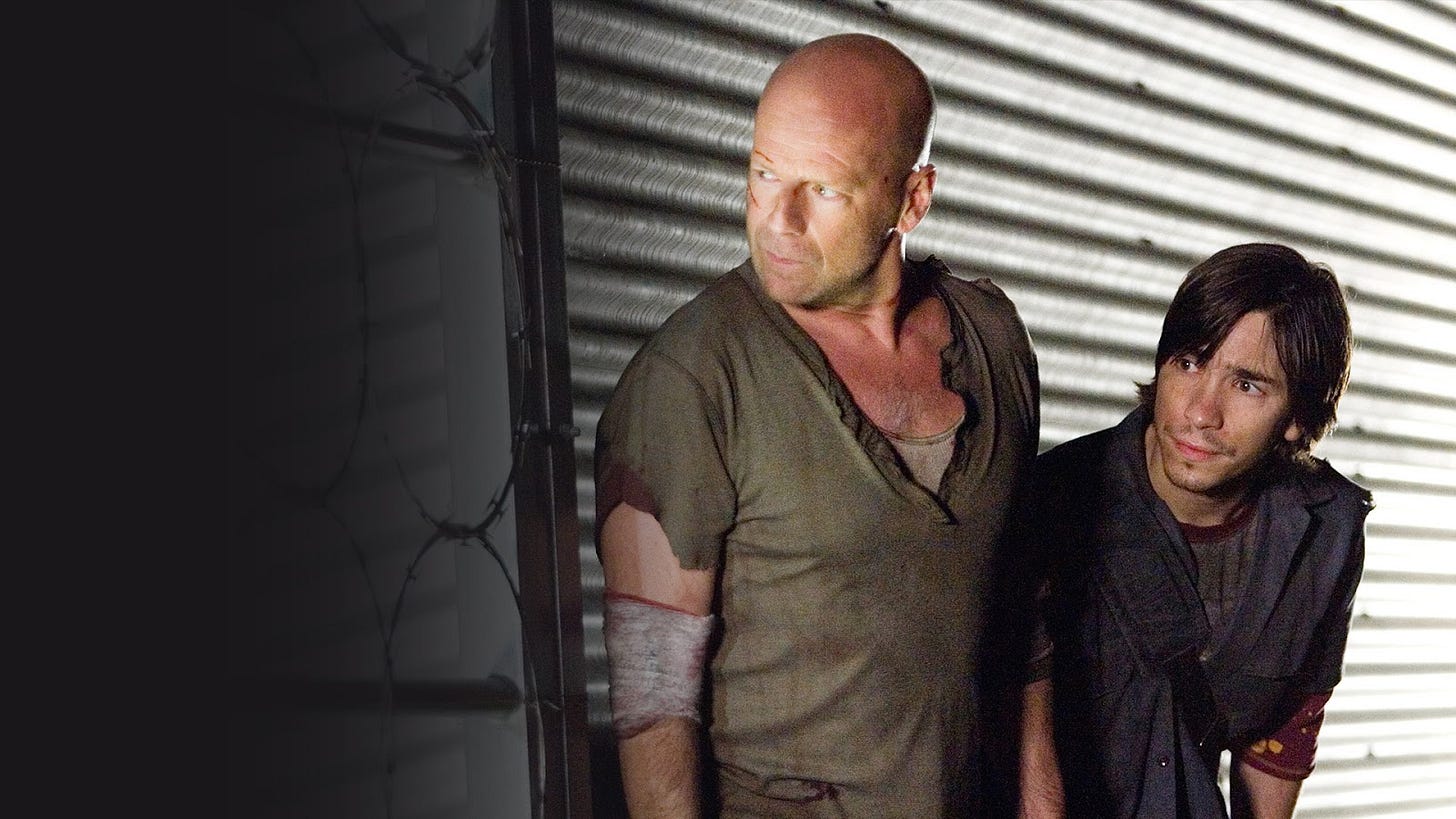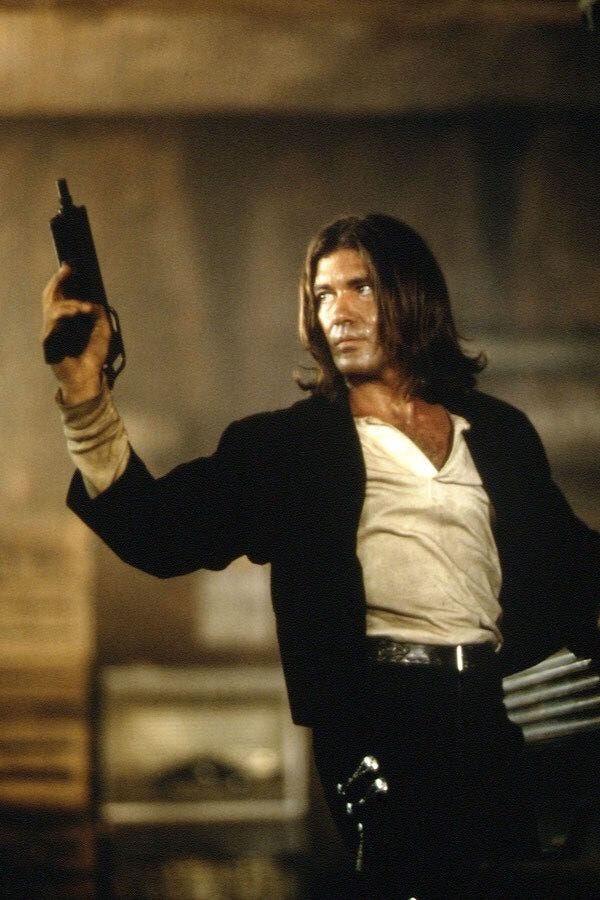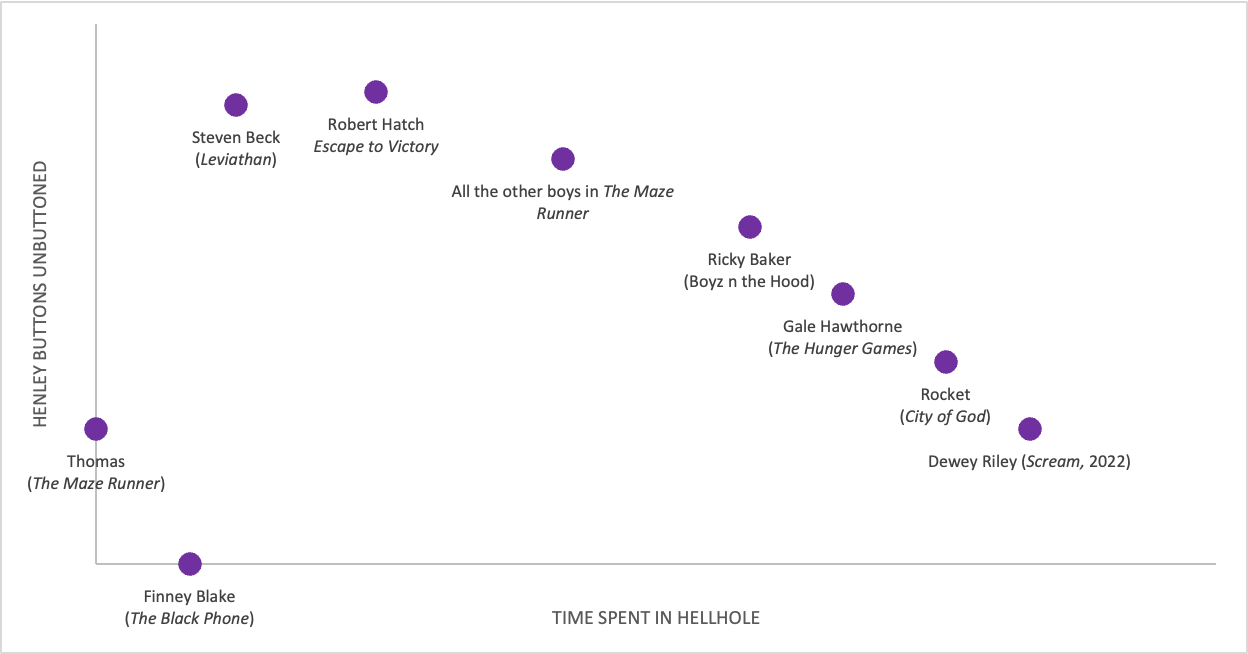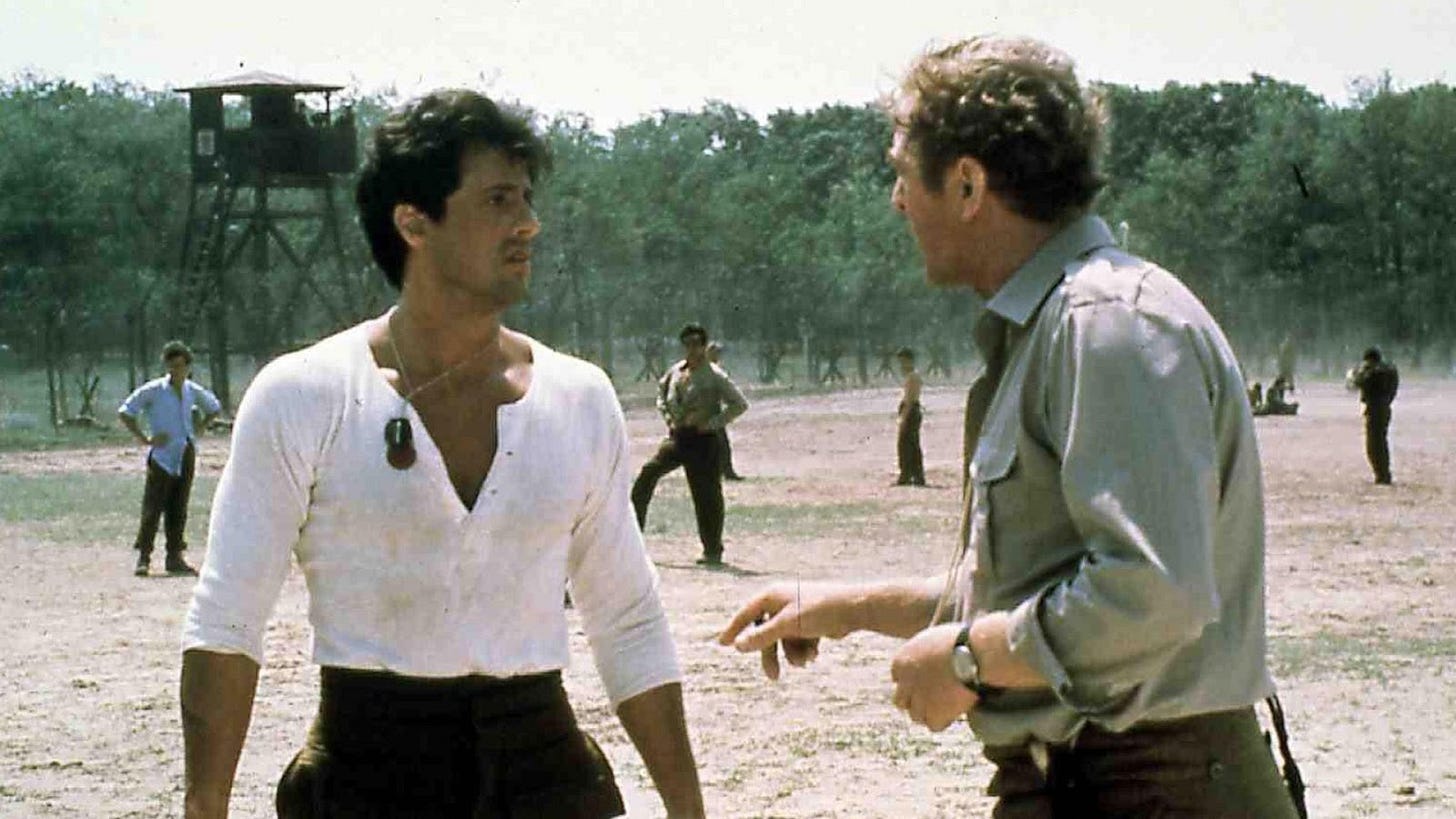Not All Heroes Wear Capes—But They Do Wear Henleys
Why the menswear staple is the go-to garment for the modern-day male movie hero
There’s a famous scene in The Empire Strikes Back when Leia calls Han a “stuck up, half-witted, scruffy-looking nerf herder.”
It’s an iconic insult for an iconic character. Fittingly, Han, ever-arrogant, only takes issue with the “scruffy-looking” part.
There’s a whole lot that’s scruffy about Han—his messy hair, his American Frontier-style clothes, his overall roguish demeanor—but we all love him for it!
It’s hard to think of a modern male hero or protagonist who isn’t in some way molded in his image. In Han Solo, Harrison Ford created an archetype for what a hero can—and should—look like.
And it all starts with his tan undershirt.
What is it, though? If you Google “What is Han Solo’s shirt called?” you won’t get a definitive answer. Is it a V-neck with a half collar? A three-quarter sleeve with a Mandarin collar and a V-neck placket? I’m not entirely sure what some of those words mean, but what’s clear is that netizens are all kind of saying the same thing: it’s a henley1.
A cross between a polo and a t-shirt, the henley is comfortable yet practical; it’s form-fitting without being constrictive; it has the slight promiscuity of a V-neck without looking stupid2; and it has a vibe that says: “I’m here for you, but I’m an independent person.”
Most importantly, its three to five buttons offer added versatility, enabling the wearer to button up for a more reserved look or button down to expose their chest—the “goods” as some might say.
For those reasons, it should come as no surprise that so many male3 movie heroes across all genres are often seen wearing them. From Jason Statham in Death Race, to Tom Cruise in Jack Reacher, to Ryan Reynolds in Free Guy, it feels like every Hollywood hunk has found their way into a henley. Even Jason Momoa somehow gets a chance to wear one in Aquaman and the Lost Kingdom despite basically being a fish.
But not everyone can wear a henley in the same way. That’s because there’s a code—a rule that dictates how and to what extent a hero can button or unbutton their henley.
To illustrate this, I collected 20 different heroes across 20 different movies and examined the number of unbuttoned buttons on their henleys in relation to two variables: their overall hunkiness, and their experience in stressful situations—the two most common factors that gain a hero entry into the henley club.
For the purposes of this article, I defined a ‘hero’ as anyone who is a major protagonist. They don’t have to do anything heroic, per se, but they need to be someone we root for and want to succeed.
Are you hot or having a hard time?
The first thing we’ll look at is a character’s hunkiness. This is self-explanatory, but it basically takes into account their impressive muscular physique, angled jawline, facial stubble, etc.
So what does a character’s overall hunkiness have to do with their henley buttons? A lot actually.
Since we’re essentially comparing these actors and characters, I assigned each a point value for their attractiveness relative to the others. For instance, I gave David Arquette from the Scream franchise a 2, because, despite being objectively good-looking, he is less hunky than, say, Bruce Willis, whom I gave a 7.
As you can see from the graph, there is a solid positive correlation between hunkiness and the number of henley buttons unbuttoned, meaning, the hunkier you are, the more chest you can expose.
It's worth noting here that not all henleys are created equal. A lot depends on the length of the placket, and how much space there is between buttons. For example, The Rock’s teeny white henley in 2017’s Baywatch only has two buttons unbuttoned, but that’s equivalent to four or five buttons unbuttoned on a normal human.4 Conversely, Tom Holland’s beige henley in 2021’s Uncharted also has two buttons unbuttoned but it barely reveals any skin—that is, until he gets soaked and his henley sags off his body a bit.
Taking these details into account, this graph charts the highest number of buttons a character has unbuttoned or, alternatively, the most amount of chest they bare in their movie.
Diving deeper into the graph, Daniel Kaluuya would have ranked hunkier had he worn a henley in a movie like Sicario or Nope, where he plays rougher, tougher guys. While Get Out doesn’t exactly paint him as a hunk, he’s unquestionably a hero in it, which is why he was a no-brainer to make the list.
Among the other characters, Chris Pratt’s Owen Grady from Jurassic World draws the most inspiration from Han Solo. That’s not to take anything away from Owen (or Pratt)—he ranks highly on his own hunky merits.
At the higher end, you’ll find the aforementioned The Rock from Baywatch and Brad Pitt from A River Runs Through It. No surprises5 there. Only Antonio Banderas in Desperado comes close to reaching Harrison Ford’s tier. But if it wasn’t clear already, no one is Harrison Ford but Harrison Ford.
But herodom has evolved. We no longer look solely to our brawniest for heroic inspiration. Those that struggle through adversity offer plenty of everlasting appeal. Instead of evaluating these characters based on looks, we rank them instead on the length of time they spend in trying situations.
For this graph, I assigned a point value to how long these individuals suffer relative to their peers’ experiences, denoted by TIME SPENT IN HELLHOLE. For example, Finney Blake6 from The Black Phone got a 1, because he was only locked in The Grabber’s dungeon for a matter of days or possibly weeks, whereas Rocket from City of God got a 9 because he’s lived all 18 years of his life in the crime-ridden favelas of Rio de Janeiro.
Surprisingly, this graph indicates that the longer a character spends in a hellhole, the more buttoned their henley is. At first glance, that seems counterintuitive, but it’s a perfect representation of their damaged emotional states. They’re hurt, skittish. The longer they spend in these hellish worlds, the more defensive their henley style is. It’s as though they’re shielding the weak points on their neck and chest from the potential kill strokes they’re so used to deflecting. Nevertheless, they’ve proven their heroism by simply surviving so they might as well don the uniform, right?
This is particularly true for Dewey Riley, who, after enduring over 20 years of horror from nine different Ghostface killers, appears in 2022’s Scream as a broken-souled husk of his former self. But he’s earned a henley because he’s saved a lot of people during his time as sheriff of Woodsboro. He’s like a retired athlete clutching their championship trophy as they sit in their underwear on a dusty recliner, whiling the hours away in a foggy stupor.
At the very top of the graph you’ll find Robert Hatch, the American soldier played by Sylvester Stallone in the World War II soccer movie Escape to Victory, who has spent months in a German P.O.W camp. Since he is both a hunk and a prisoner, Robert Hatch is perhaps the only person not named Harrison Ford that is allowed to wear their henley this boldly.7
Ricky Baker (Boyz n the Hood), Gale Hawthorne (The Hunger Games) and Rocket (City of God) have all spent their entire lives in their respective hellholes, and all three are roughly the same age. One quick note about Ricky: in most scenes where he’s wearing a henley he only has one or two buttons unbuttoned, but in the scene when he is killed, it looks like he has three buttons unbuttoned. While this might be a small styling error, I have nevertheless decided to reflect that in the graph.
There’s an interesting exception to the hellhole rule, though. In The Maze Runner, Thomas, the newest boy in the Glade, only has one button unbuttoned while all the other maze boys have more buttons unbuttoned. Most likely, the stylists wanted the veteran Gladers to look more disheveled than the fresh-faced Thomas, showing that maze life is challenging.
So what’s the point of all this? What’s with all the henleys?
While the scope of this research is comprehensive, further analysis is needed. One question that future researchers should consider is the correlation between henley buttons unbuttoned and the overall success of a movie hero—how many people they save, how many things they blow up, how many bad guys they kill. Additionally, follow-up analyses should examine whether movie heroes with henleys are inherently better than those without. Nevertheless, we can still draw some key conclusions from the proposed data.
Firstly, henleys make heroes more human, and thus, more relatable. Now personally, I think henleys are a questionable option for regular men8. They make you look like an overgrown baby in a onesie. However, it’s one of the most popular menswear choices.
My hypothesis is: guys want to feel more like movie heroes.
Ultimately, we connect with protagonists that are recognizable, and feel and look the most relatable. And what’s more relatable than a henley—a shirt you can buy at Target for $15 right now?
This brings us back to Han Solo, the pioneer in herodom and henley-wear. His signature costume is an inalienable piece of Star Wars’s enduring legacy, establishing the benchmark for what a movie hero should look like.
40 years after Star Wars, it feels almost like a requirement that male action heroes show off their pecs like Han Solo. Shouldn’t they be protecting their hearts from bullets and the like, instead of exposing themselves to potential harm? No, because we expect and want our hunky protagonists to bare it all.
At the end of the day, we want scruffy-looking nerf herders.
Worth noting that Han doesn’t wear a conventional henley because he lives in a fictional universe. Nevertheless, it functions like any other henley. You also can’t call it a V-neck because it can fold (button) up.
One of the greatest disappointments is Brad Pitt didn’t wear a henley in World War Z. Instead, he wore a crew neck under a V-neck. It looks awful.
I have never seen a female hero wear a henley. Actually, that’s not true. Ally Sheedy wore one in WarGames when she convinced the U.S. government to let Matthew Broderick play a computer game to save the world. Meryl Streep also wore one in The River Wild when she saved her family from two dangerous criminals on a white water rafting trip. But they are unicorns. Producers have other creative ways of subtly exposing the female body, like having them get completely naked.
The Rock’s henley in this case could be more of a necessity, since it might be the only garment capable of containing The Rock.
One decision that may be controversial is ranking Leonardo DiCaprio as hunkier than Will Smith. Will Smith does pull ups shirtless in I Am Legend, while Leonardo DiCaprio doesn’t do any pull ups in Titanic. But Titanic-era DiCaprio is arguably the most handsome DiCaprio era, which, on any day, is hard to beat.
Finney is only seen wearing a henley at the very end of the movie, after he’s killed The Grabber and freed the trapped souls of the past victims. In effect, he becomes a hero, earning himself a spot on this coveted list.
What’s more is Robert Hatch is pretty much the only prisoner in the camp that wears a henley. Everyone else wears a polo. Here is a clip of him playing goalie against Pelé:
On Season 6 of reality dating show Love is Blind, cast member Jeramey discussed his preference for the garment, saying “I have a thick neck so henleys are comfortable.” This is among my least favorite things I’ve ever heard.























this deserves a Nobel prize for investigative journalism tbh
JerAmy slander is always good to see